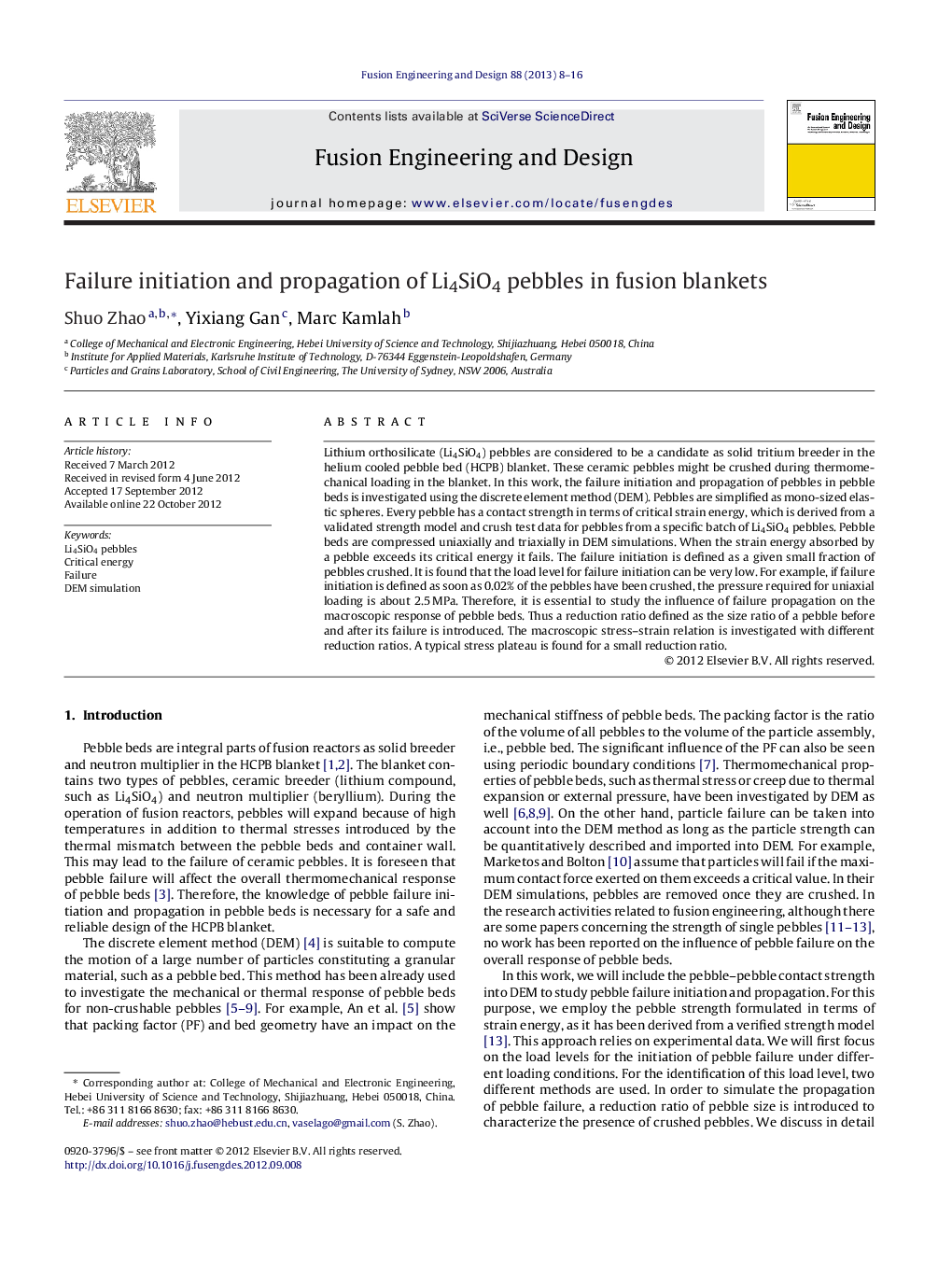| Article ID | Journal | Published Year | Pages | File Type |
|---|---|---|---|---|
| 272112 | Fusion Engineering and Design | 2013 | 9 Pages |
Lithium orthosilicate (Li4SiO4) pebbles are considered to be a candidate as solid tritium breeder in the helium cooled pebble bed (HCPB) blanket. These ceramic pebbles might be crushed during thermomechanical loading in the blanket. In this work, the failure initiation and propagation of pebbles in pebble beds is investigated using the discrete element method (DEM). Pebbles are simplified as mono-sized elastic spheres. Every pebble has a contact strength in terms of critical strain energy, which is derived from a validated strength model and crush test data for pebbles from a specific batch of Li4SiO4 pebbles. Pebble beds are compressed uniaxially and triaxially in DEM simulations. When the strain energy absorbed by a pebble exceeds its critical energy it fails. The failure initiation is defined as a given small fraction of pebbles crushed. It is found that the load level for failure initiation can be very low. For example, if failure initiation is defined as soon as 0.02% of the pebbles have been crushed, the pressure required for uniaxial loading is about 2.5 MPa. Therefore, it is essential to study the influence of failure propagation on the macroscopic response of pebble beds. Thus a reduction ratio defined as the size ratio of a pebble before and after its failure is introduced. The macroscopic stress–strain relation is investigated with different reduction ratios. A typical stress plateau is found for a small reduction ratio.
